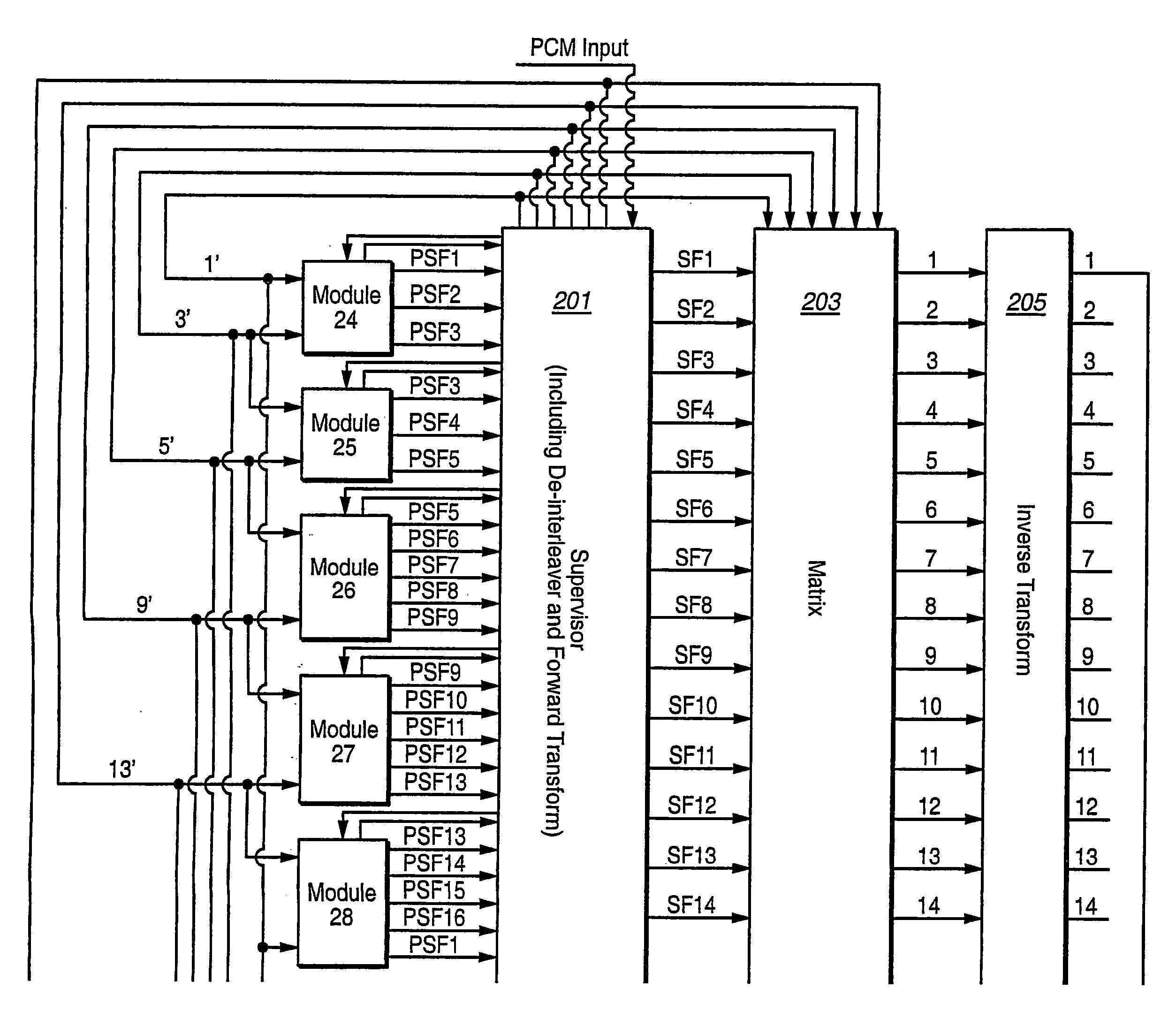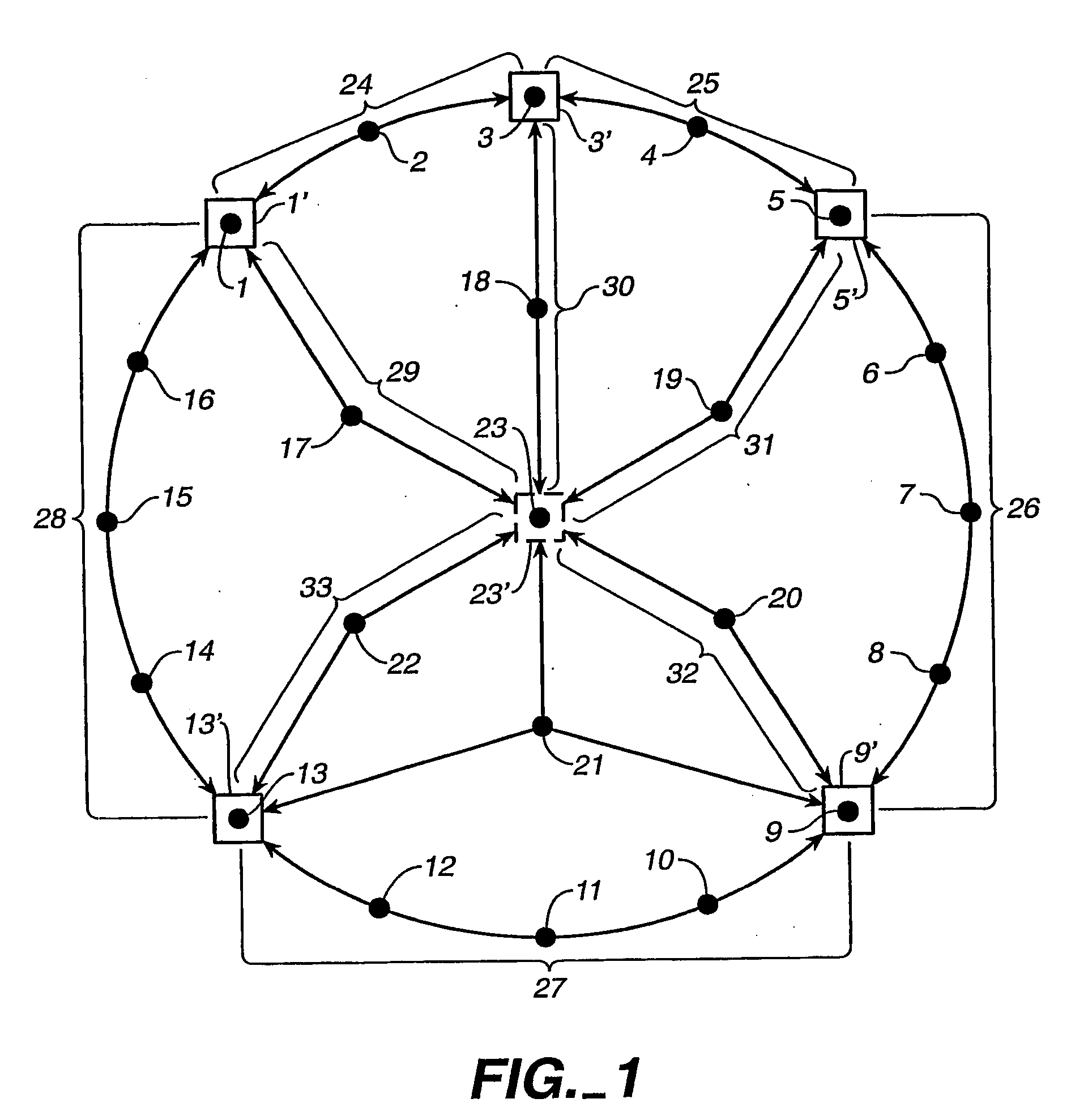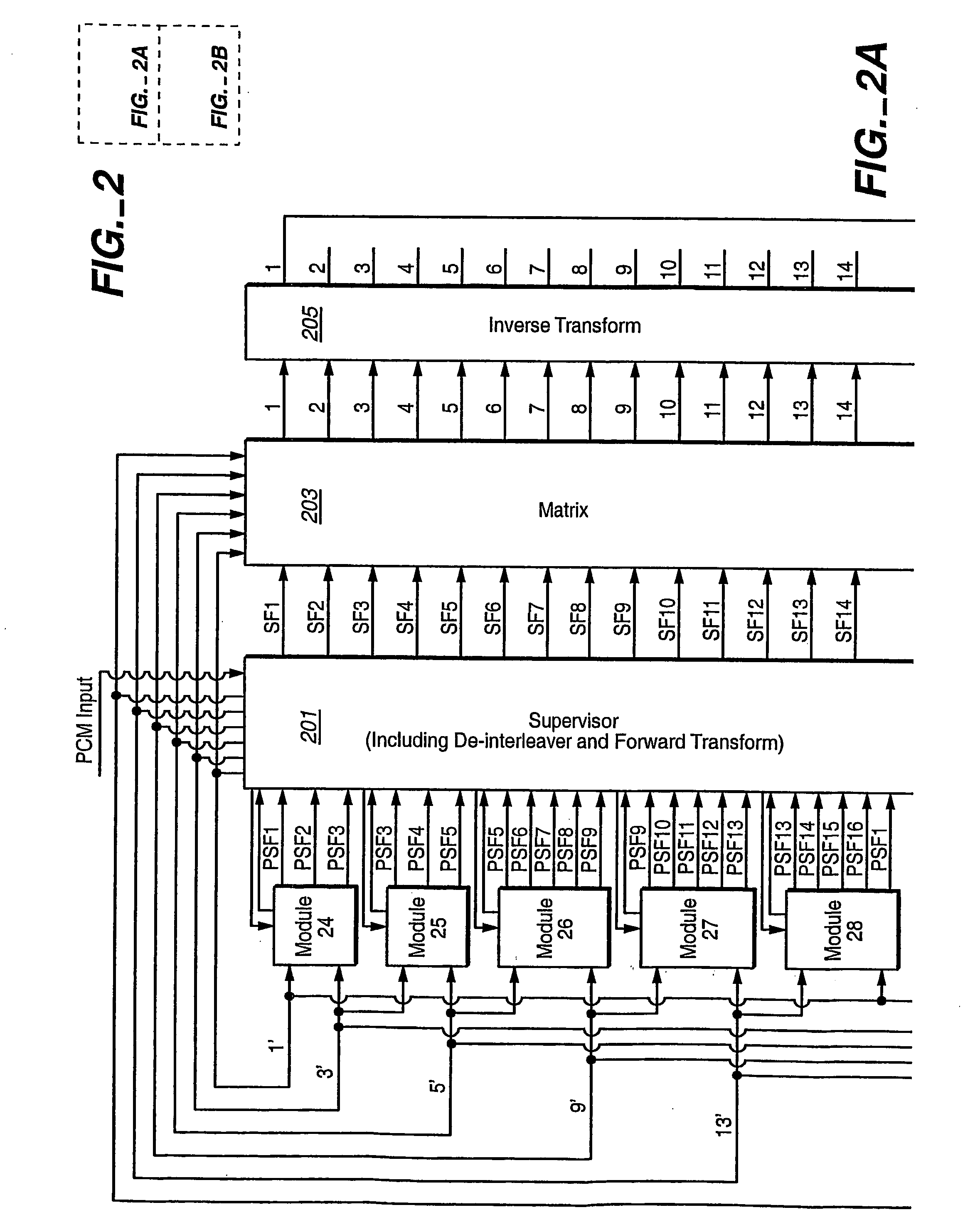Audio channel spatial translation
a spatial translation and audio channel technology, applied in the field of audio signal processing, can solve the problems of system occurrence of a number of unfortunate imperfections, system inclination, and inability to capture a 3d soundfield, and achieve the effect of mitigating most of the effects of neighbor module interaction
- Summary
- Abstract
- Description
- Claims
- Application Information
AI Technical Summary
Benefits of technology
Problems solved by technology
Method used
Image
Examples
Embodiment Construction
[0053] In order to test aspects of the present invention, an arrangement was deployed having a horizontal array of 5 speakers on each wall of a room having four walls (one speaker in each corner with three spaced evenly between each corner), 16 speakers total, allowing for common corner speakers, plus a ring of 6 speakers above a centrally-located listener at a vertical angle of about 45 degrees, plus a single speaker directly above, total 23 speakers, plus a subwoofer / LFE (low frequency effects) channel, total 24 speakers, all fed from a personal computer set up for 24-channel playback. Although by current parlance, this system might be referred to as a 23.1 channel system, for simplicity it will be referred to as a 24-channel system herein.
[0054]FIG. 1 is a top plan view showing schematically an idealized decoding arrangement in the manner of the just-described test arrangement. Five wide range horizontal input channels are shown as squares 1′, 3′, 5′, 9′ and 13′ on the outer cir...
PUM
 Login to View More
Login to View More Abstract
Description
Claims
Application Information
 Login to View More
Login to View More - R&D
- Intellectual Property
- Life Sciences
- Materials
- Tech Scout
- Unparalleled Data Quality
- Higher Quality Content
- 60% Fewer Hallucinations
Browse by: Latest US Patents, China's latest patents, Technical Efficacy Thesaurus, Application Domain, Technology Topic, Popular Technical Reports.
© 2025 PatSnap. All rights reserved.Legal|Privacy policy|Modern Slavery Act Transparency Statement|Sitemap|About US| Contact US: help@patsnap.com



